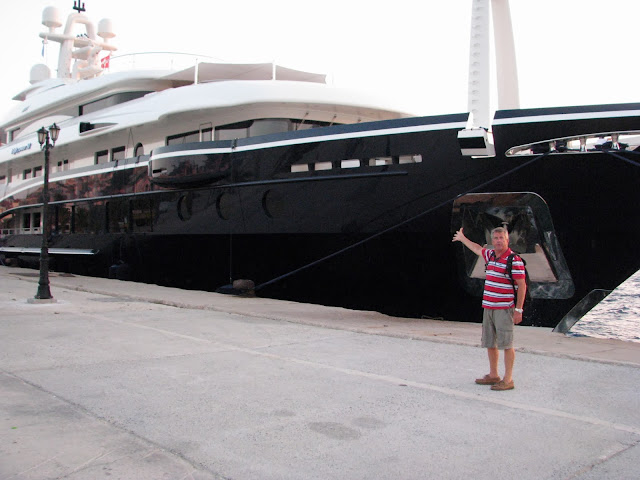Spinnaker Furler - a further comment… (Spanish Experience). Well, we didn’t purchase one this year as the particular Profurl model I was after didn’t have any torsion lines available. They were coming up with an improved torsion line as it turned out and it is now on the market – it looks much better than the original (it appears to have all these little balls on the line which, I assume, makes furling more efficient). The winds we experienced on our voyage this year didn’t really suit flying spinnakers ie on the nose or, if in the right direction, too strong to fly a spinnaker on a cruising boat. Something for the future perhaps and it certainly remains on my shopping list. I will also purchase a removable bowsprit to get the tack of the spinnaker forward of the pulpit.
 |
| Some subscribe to really slow boating |
Broken Dunny Seat
Hinge. Someone sat down too heavily
on our guest dunny (I think it was me) and a hinge broke making it very unsafe
at sea (just use your imagination). New
hinges were purchased and one of our guests was asked to take off the old and
attach the new (using stainless steel screws this time – why Jabsco use normal
steel screws on a marine toilet seat escapes me as they are otherwise an
excellent product) while the skipper did other things. Apparently, it was quite a performance to remove
the old screws and hinges but I did realise how “handy” or self-reliant boaties
must be in general to keep our boats ticking over and in good working order. Anyway, the throne is all back together and providing
safe seating once again.
Fridge Repairs Underway. In Greece our fridge and freezer gradually lost
most of its refrigerant/gas. We had to
revert to our trusty and reliable (touch wood) Waeco. Some friendly Canadian neighbours we shared
an anchorage with at Kuruca Buku, Turkey had a handheld refrigerant leak
detector. This worked a treat and we
quickly identified the leak along the gas line at one of the fittings. A bit of a tighten with a spanner and no more
leak. When we arrived at Marmaris a
fridge technician topped up our gas, checked for any further leaks and we were
back in business. It makes a huge improvement
to life on board (for the galley slave particularly). I will purchase one of these detectors and
use it to scan for leaks every week or so – they only cost around $30-50. If I had done this earlier I would have
detected and fixed the leak and regassing is not cheap. This experience also speaks volumes about cruising camaraderie - somewhat in short supply in a touristy Med. So, well done & greatly appreciated!  |
| Sunset over Ibiza, Balearics |
































